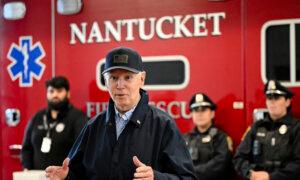Members of the BRICS economic bloc have discussed dumping the U.S. dollar and adopting a new shared currency.
President-elect Donald Trump threatened to impose 100 percent tariffs on members of the BRICS economic bloc who move to adopt a new currency to compete with the U.S. dollar.
“The idea that the BRICS countries are trying to move away from the dollar while we stand by and watch is OVER,” Trump wrote in a Nov. 30
post on his Truth Social profile. “We require a commitment from these countries that they will neither create a new BRICS currency, nor back any other currency to replace the mighty U.S. dollar, or they will face 100% tariffs, and should expect to say goodbye to selling into the wonderful U.S. economy.”
The BRICS countries—which began as Brazil, Russia, India, China, and South Africa, but have since expanded to Egypt, Ethiopia, Iran, and the United Arab Emirates—have been banding together to form an economic counterweight to the United States and European Union. Around 40 countries attended the most recent BRICS summit, held in Kazan, Russia, in October.
The economic bloc has increasingly considered
dumping the U.S. dollar and forming a new shared
currency in its place.
Part of the U.S. dollar’s strength is its position as the main currency for international oil trade. BRICS and its partners include numerous fossil fuel producers, and a shift away from the U.S. dollar and toward their own shared currency could
undermine the dollar’s position as the oil trade currency.
Trump issued his tariff threat in an effort to head off this BRICS currency.
“They can go find another ’sucker!’ There is no chance that the BRICS will replace the U.S. dollar in international trade, and any country that tries should wave goodbye to America,” he said.
Trump has repeatedly presented tariffs as a tool for the United States to rebalance its economic relationships around the world.
On the 2024 campaign trail, the president-elect said he would impose a 10 percent
tariff on all imports across the board, with higher targeted tariffs on specific countries; such as a 60 percent tariff on all Chinese goods. Trump has further threatened an additional 10 percent tariff on China until it stops the flow of narcotics like fentanyl from entering the United States.
In social media posts on Nov. 25, Trump vowed to impose 25 percent
tariffs on neighboring Mexico and Canada as a means of compelling either country to secure their borders and stop drug trafficking and illegal immigration into the United States.
The president-elect has touted some productive discussions and potential policy shifts from the countries he’s singled out for potential targeted tariffs.
In a Nov. 27 social media post, Trump
recounted what he described as a “wonderful conversation” with Mexican President Claudia Sheinbaum Pardo, in which they discussed drug trafficking, and she agreed to take action to stop migration through Mexico to the United States border.
In another Truth Social
post on Nov. 30, shortly after threatening 100 percent tariffs against BRICS, Trump described another conversation with Canadian Prime Minister Justin Trudeau. Trump said they discussed a range of issues, including energy, trade, and the Arctic, and Trudeau committed to help address fentanyl trafficking impacting the United States.





